- Home
- TV History
- Network Studios History
- Cameras
- Archives
- Viewseum
- About / Comments
Skip to content
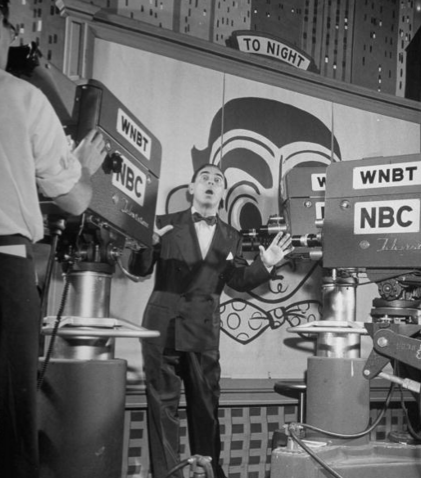

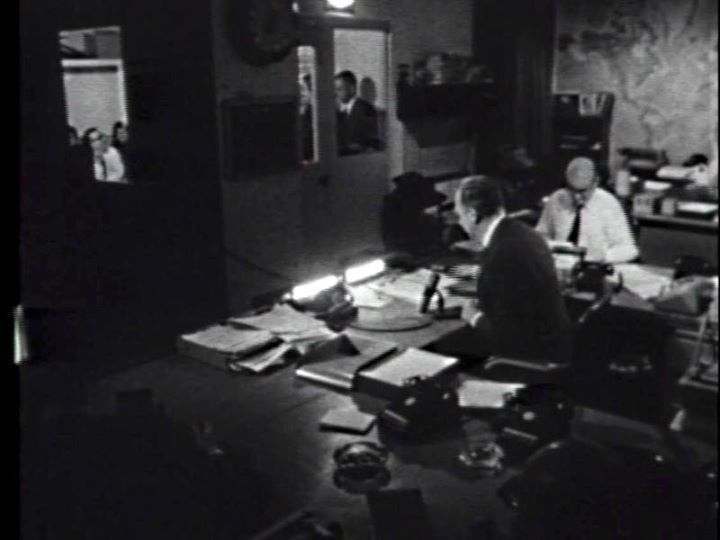

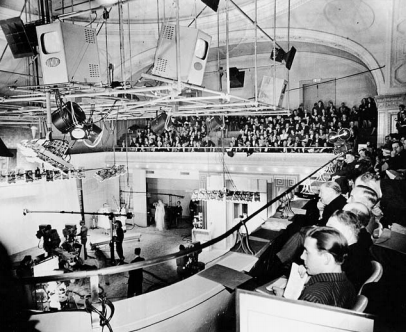

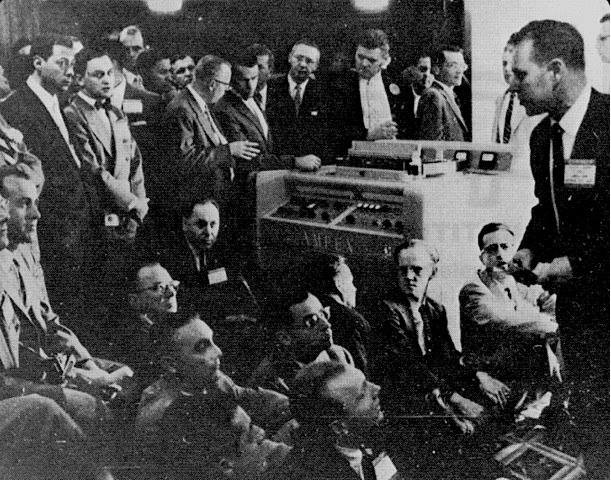



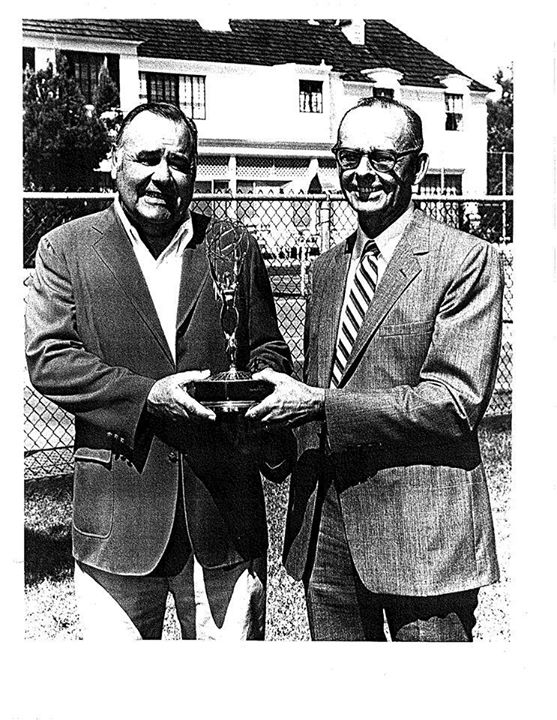

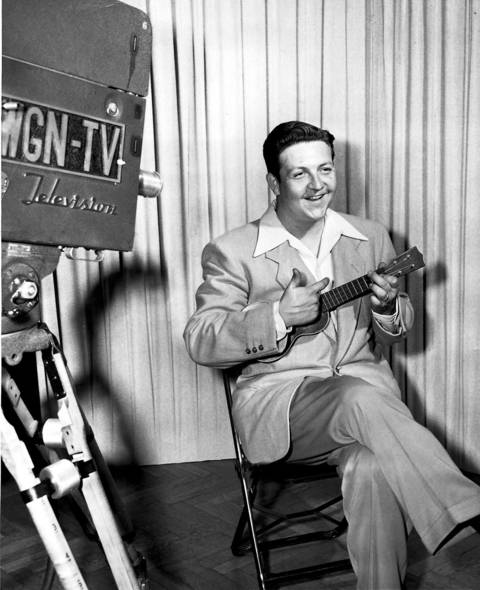



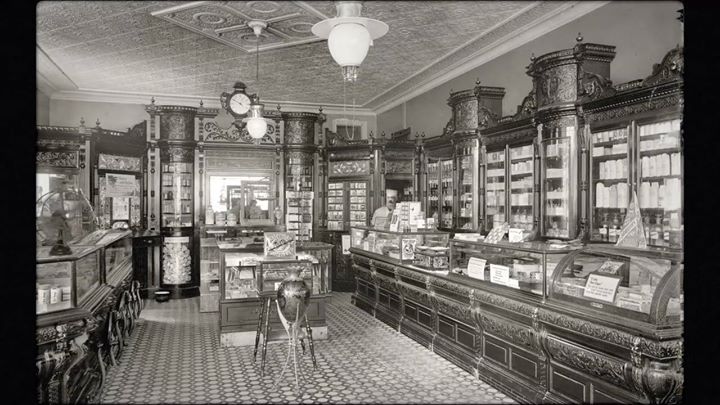

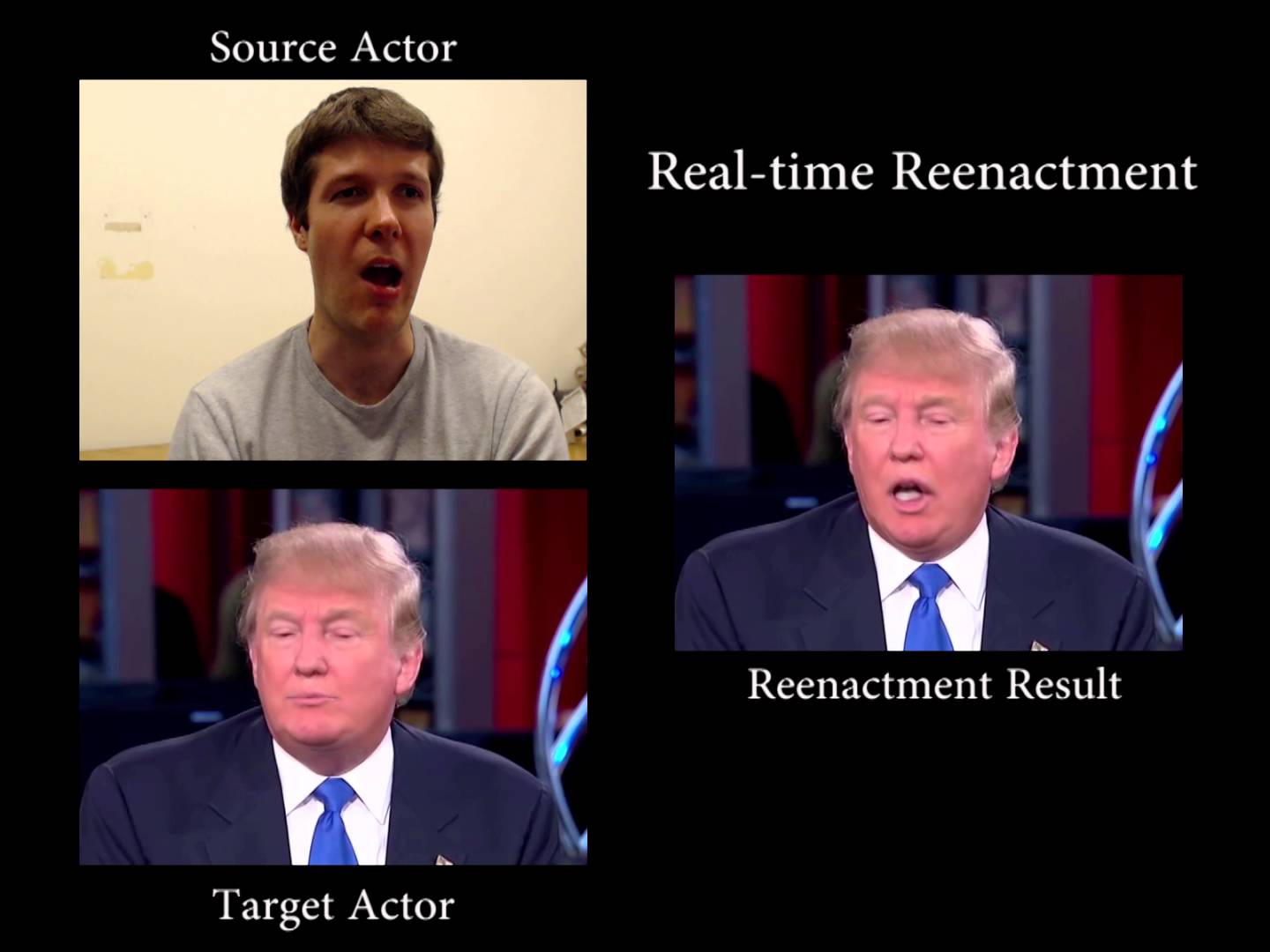



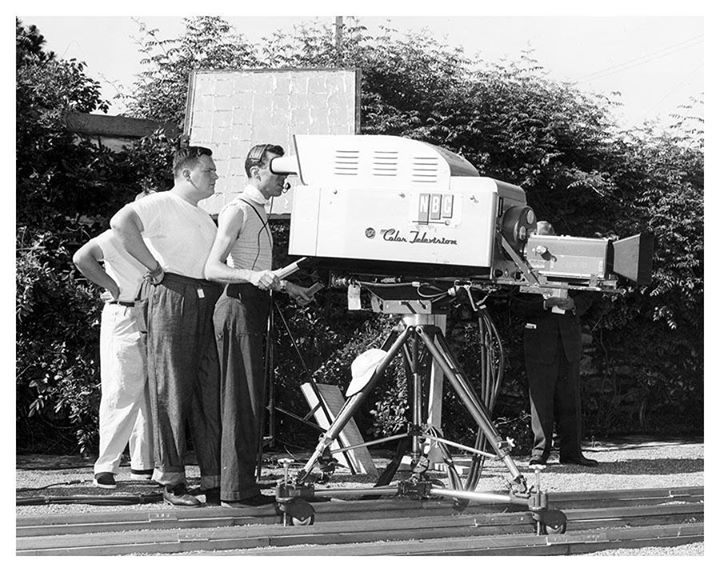

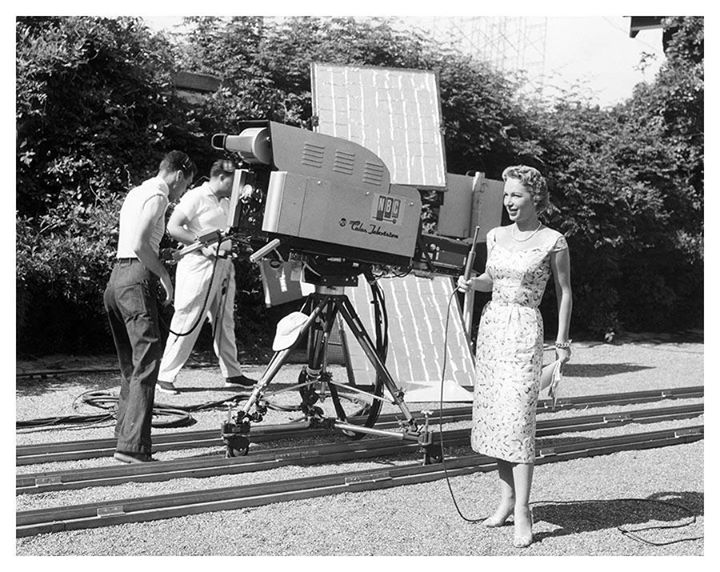
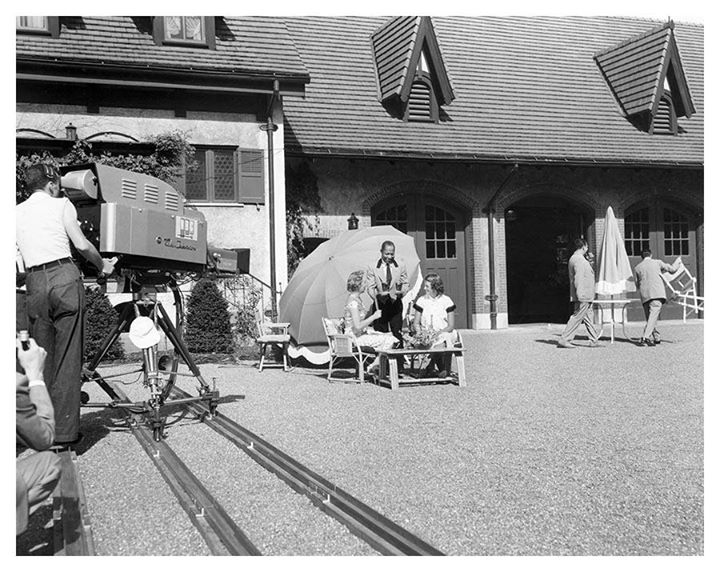

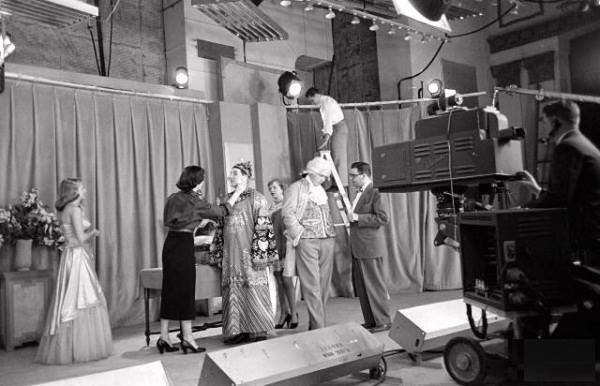



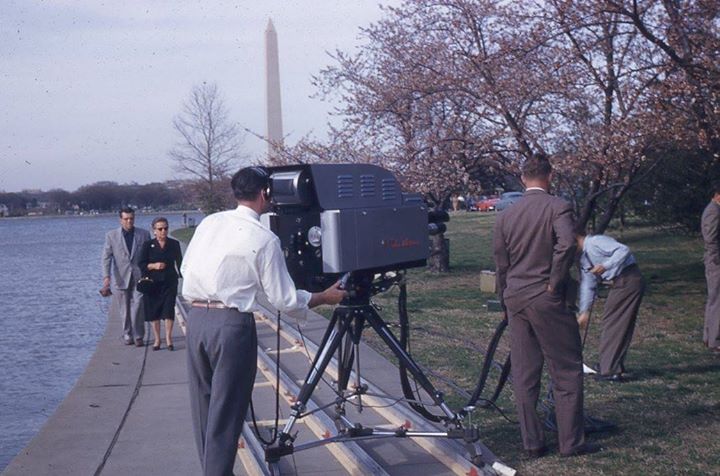

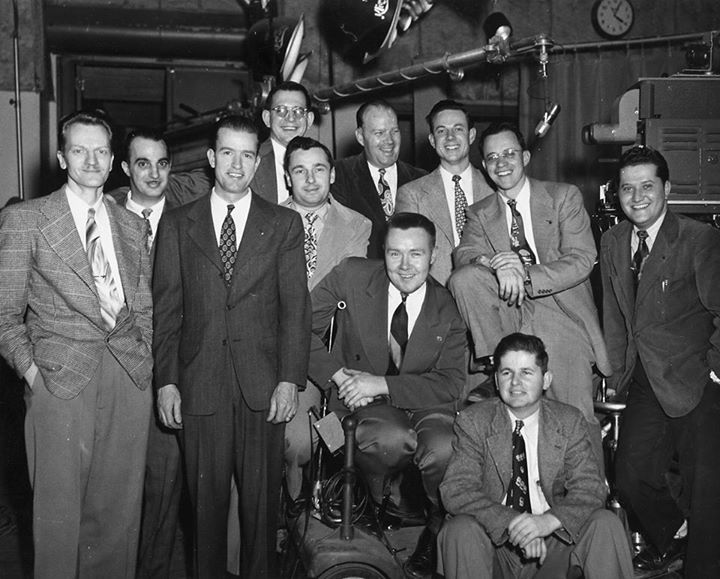

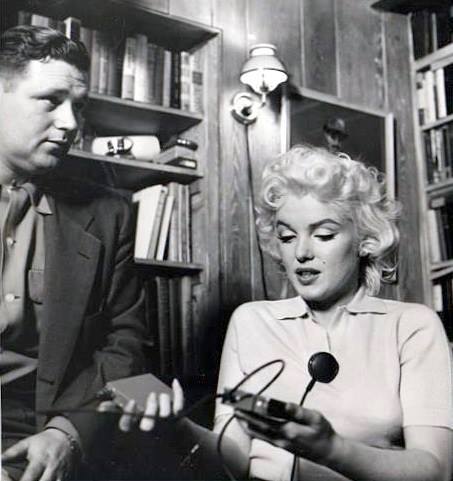





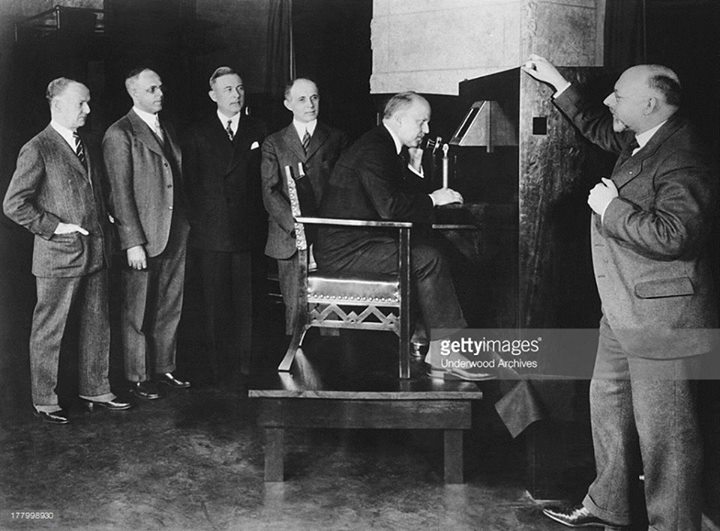

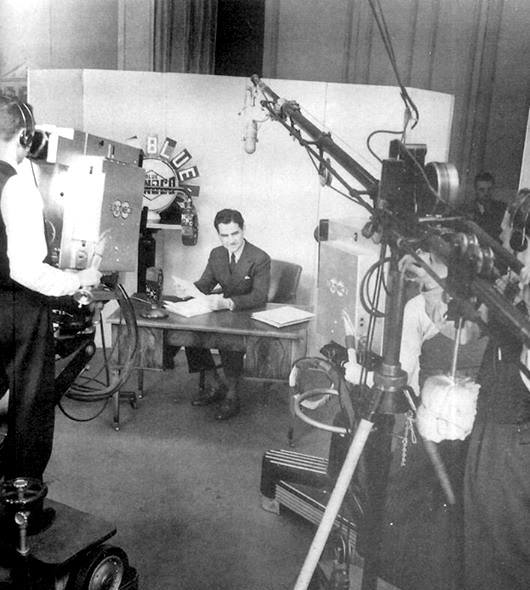

Posts in Category: TV History
Page 26 of 136
« Previous
1
2
3
4
5
6
7
8
9
10
11
12
13
14
15
16
17
18
19
20
21
22
23
24
25
26
27
28
29
30
31
32
33
34
35
36
37
38
39
40
41
42
43
44
45
46
47
48
49
50
51
52
53
54
55
56
57
58
59
60
61
62
63
64
65
66
67
68
69
70
71
72
73
74
75
76
77
78
79
80
81
82
83
84
85
86
87
88
89
90
91
92
93
94
95
96
97
98
99
100
101
102
103
104
105
106
107
108
109
110
111
112
113
114
115
116
117
118
119
120
121
122
123
124
125
126
127
128
129
130
131
132
133
134
135
136
Next » A Story Of TV History Treasure…LOST
On April 16, 2016
- TV History
A Story Of TV History Treasure…LOST
For a year and a half, on what was then WRCA, Bill Cullen hosted a local (New York) fifteen minute television show called “Inside NBC”. Here is a description of just a few of the shows. It would be fantastic to see all of this backstage stuff, BUT…sadly, as far as I know, all of this is gone. If you know more, please tell us.
Monday, December 12, 1955 [DEBUT] Bill Cullen hosts this 15-minute program which spotlights NBC’s personnel, history, features, and entertainment. NBC cameras pick up rehearsals in progress, previewing shows to appear the same evening or later that week.
Monday, December 19, 1955 Viewers see a “Playwrights 56” rehearsal in action. Bill Cullen interviews producer Fred Coe, director Arthur Penn, and stars Kim Stanley and Louis Jean Heydt.
Friday, December 23, 1955 Bill Cullen visits David Aiken as he is made up for his role in Sunday’s “Alcoa Hour” production of “Amahl and the Night Visitors”. The cameras also pick up a rehearsal of “Babes in Toyland” to be seen on Max Liebman Presents.
Monday, December 26, 1955 Bill Cullen tours the “Home” show studios. Guest: Dick Linkroum, Home’s exec. producer.
Friday, December 30, 1955 Bill Cullen’s guest, Mary Martin, discusses the forthcoming “Peter Pan”.
Friday, January 6, 1956 The operation of the NBC news department is explained through interviews and films. The cameras pick up a rehearsal Ken Banghart’s news program.
Monday, January 9, 1956 Bill Cullen visits NBC’s special effects dept. to show how fog, rain, snow, etc. are made for TV.
Friday, January 13, 1956 Les Colodny, director of NBC’s comedy development program, explains and tells of plans for ’56. He introduces an act by some new talent.
Monday, January 23, 1956 Tex Antoine explains the preparation of his weather programs. Bill Cullen interviews Henry Salomon, producer of Circle Theater’s “Nightmare” in Red, to be repeated tomorrow evening.
Friday, January 27, 1956 Bill Cullen takes viewers behind the scenes of radio’s “Monitor”. Guest will be Gene Rayburn.
Monday, January 30, 1956 The NBC Technical Operations Department demonstrates the transmission of a TV picture from coast to coast. Cameras pick up a rehearsal of Milton Berle’s show from Hollywood.
Friday, February 3, 1956 Host Bill Cullen and Maurice Evans discuss this Sunday’s “Hallmark Hall of Fame” production of “The Good Fairy”, starring Julie Harris. Chet Huntley of the NBC News Department previews “Outlook”, a news program which debuts this Sunday. Special guest: J. Fred Muggs.
Monday, February 6, 1956 Bill Cullen visits Sid Caesar at his office and studios.
Friday, February 10, 1956 Bill Cullen reviews the first NBC telecast, April 30, 1939. This was the NBC special events pickup of the opening of the World’s Fair at Flushing Meadows.
Monday, February 27, 1956 The cameras switch to Hollywood to pick up a rehearsal of Tuesday’s Matinee Theater production, “A Tall Dark Stranger”. Its star, Zsa Zsa Gabor, and host John Conte are guests. Bill Cullen, in New York, does a feature on the early days of NBC news coverage.
Friday, March 2, 1956 The cameras switch to the RCA Hall of Progress in Camden, N.J., which holds electronics equipment developed during the past century. Bill Cullen hosts.
Monday, March 5, 1956 Guest: Stockton Hellfrich of NBC’s Continuity Acceptance Dept. Bill Cullen shows “The Martha Raye Show” in rehearsal, via film.
Friday, March 9, 1956 Host Bill Cullen highlights NBC’s coverage of the Presidential campaign. He also interviews Laurence Olivier.
Monday, March 12, 1956 Ike Kleinerman, film editor of Wednesday’s “Project 20″ production, explains how the film was procured and edited.
Friday, March 16, 1956 Host Bill Cullen discusses the presentation of the TV “Emmy Awards” show.
Monday, April 16, 1956 Bill Cullen conducts a remote program with WRCA-TV’s new mobile unit.
Monday, May 7, 1956 Host Bill Cullen and his special guest, Lee Ann Meriwether, conduct a quiz show. Contestants are the five finalists of the “Miss NBC” contest.
Friday, May 18, 1956 Bill Cullen is host to Thomas B. McFadden, general manager of WRCA-TV and Ray Owen from the reporting staff of WRCA’s Pulse. Owens discusses Pulse’s technique for covering news.
That is a pretty amazing trove of treasure…and only a small sample of the “Inside NBC” shows Cullen hosted. I think these are all gone but hope someone knows if they survive. – Bobby Ellerbee
Below, Eddie Cantor hosting “The Colgate Comedy Hour”.
April 16, 1962…Walter Cronkite Takes Over “CBS Evening News”
On April 16, 2016
- TV History
Be sure to read the text uner the photos for some interesting details on the production process, and the location of the show over time.
Above, Walter at his Graybar Building desk with staff in the fishbowl office watching the broadcast. The fishbowl office was in the same place when the show moved to the Broadcast Center.
On the left, legendary CBS News producer Don Hewitt
When the show moved to the Broadcast Center, this newsroom wall was replicated, but instead of the chalk board and clock, it was lined with teletype machines, and adorned with the famous world map, that is now a part of the “CBS Morning News” set.
Only two cameras could fit into the Graybar newsroom and the same was true for the Studio 33 newsroom.
I am not sure, but I think this small control room was built on the 29th floor, near the newsroom and fed the 2 cameras to Production Control room 43 or 44 downstairs in the main studio complex
Below, a shot of the main control room. From here, all the news film and cut-ins could be added.
Below, though that open hall behind the man at the desk, there was another area of the TV newsroom as big, or bigger than this one where a few dozen other reporters worked.
Preparing the teleprompter script
April 16, 1962…Walter Cronkite took over the anchor chair from Douglas Edwards. At the time, the show was still only 15 minutes, but that changed on September 22, 1963 when CBS became the first to go to a half hour evening news show.
https://www.youtube.com/watch?v=VjZV2UDEG2A
At the link above is Scott Pelley’s tribute video that shows a new set for Walter’s debut with bank of monitors. At 1:58, those photos are of his first rehearsal on that set in Studio 42 at Grand Central. When the show went to half an hour, Walter began reporting from the CBS News Room on the 29th floor of The Graybar Building, which adjoined Grand Central.
These photos are from the first week of the new half hour show in the Graybar offices. Occasionally, a mad dash to the studio via catwalks over the Grand Central lobby are mentioned…that time period, when news was rushed to the set, was between April ’62 and September ’63 when Walter reported from Studio 42. His work desk was in the newsroom in the Graybar.
In late 1964, the show moved to the new CBS Broadcast Center to a first floor studio called Studio 33. It looked exactly like the Graybar newsroom set, except the wall you see here with a chalk board was replaced by a wall lined with teletype machines. There was even a glassed in producer’s office in the same place it had been at Graybar,,,it was called the fishbowl, and during the broadcast, staff would go there to watch it live. You can see that in the first photo.
There is more on each photo, so click through them. Enjoy and share! -Bobby Ellerbee
April 15, 1946 & 1955…Big Days For Dumont, Gleason And Lewis
On April 15, 2016
- TV History
April 15, 1946 & 1955…Big Days For Dumont, Gleason And Lewis
This is a two part story, of two April 15th news making days for Dumont; one in 1946, the other in 1955.
Part 1, The Glory Days: This big photo was taken April 15, 1946 and shows the inaugural broadcast from the new Dumont studio at Wanamaker’s department store in Manhattan. The telecast was fed to Dumont’s W3XWT (WTTG) in Washington for broadcast there, and in Washington, some FCC officials making congratulatory comments were fed back to New York and viewed by the audience here.
Before this, Dumont’s limited local broadcasts on it’s WABD, had come from a small experimental studio at their 515 Madison Avenue headquarters,
Part 2, A Dying Breath Brought New Life To Video Assist: In the very last days in operation as a network, Dumont introduced the Electronicam.
By late ’54 the handwriting was on the wall…in February of 1955, Dumont executives realized the company could not continue as a television network. It was decided to shut down network operations and operate WABD and WTTG as independents. On April 1, 1955, most of DuMont’s entertainment programs were dropped.
April 15, 1955, nine years to the day after opening their studio at Wanamaker’s Department Store, the company introduced the 35 and 16mm versions of the Dumont Electronicam. The hope was that this new video and film production tool would help save the company, and after all, the end result was much better than the kinescope.
In September of ’55, Jackie Gleason began production of the new half hour “The Honeymooners” show for CBS. It was shot at Dumont’s Adelphi Theatre on 54th Street, with three 35mm Electornicams.
On a visit with Gleason at The Adelphi in 1956, Jerry Lewis saw the Electronicam, and never forgot that.
’56 was the year he and Dean Martin split, and Lewis did a few solo movies for director Hal Wallis, but became involved in the production as well.
By ’60, Lewis was on his own and began writing, directing and starring in his own movies with Paramount as a partner. All the while the Electronicam process was on his mind, and by the early 60s, he had begun the process of developing a true video assist technology.
By ’66, he had created “Jerry’s Noisy Toy” which included instant video and audio tape playback capacity using an RCA vidicon cameras interlinked with Mitchell BNC cameras, and one inch Sony videotape. -Bobby Ellerbee
April 14, 1956…The Videotape Revolution Begins; VR-1000 Debuts
On April 14, 2016
- TV History
This prototype Ampex VTR called “Mark IV” started a whole new era in television. Taken at the National Association of Radio & Television Broadcasters show in Chicago, the crowd photo shows the first demonstration. When this group of CBS television affiliates saw remarks by CBS’s Bill Lodge miraculously replayed moments later, everything changed! This day, a STAR was born!
Even at $50,000 per machine, the week of the demonstration, Ampex took almost 100 orders for the VR-1000 and all that got you was a space on the waiting list. Fred Pfost, one of the Ampex video tape development team members describes the scene that day.
“On the Saturday, April 14, two days before the convention started, we demonstrated the recorder for about 300 CBS affiliates meeting at the Conrad Hilton Hotel. I recorded (from behind a curtain) the opening speech of Bill Lodge, V.P. of CBS, who described all the activities that CBS had been involved in during the past year, and his announcement of a big surprise, that was about to happen. After I rewound the tape and pushed the play button for this group of executives, they saw the instantaneous replay of the speech.”
“There were about ten seconds of total silence, until they suddenly realized just what they were seeing on the twenty video monitors located around the room. Pandemonium broke out with wild clapping and cheering for five full minutes. This was the first time in history that a large group (outside of Ampex) had ever seen a high quality, instantaneous replay of any event. The experience still brings tears to my eyes when I recall this event.”
“During the week of the convention, the Ampex display area was packed, all day, every day. Orders came so fast and furious, that the Ampex sales staff was writing orders on cocktail napkins.”
It took Ampex a year to fill just the orders taken at the convention. If memory serves me right, CBS got the first 5, NBC got the second 5 and ABC, the third 5, with more on order for all 3 networks. I think CBS put 3 at TVC, and had 2 in NYC. NBC put 3 at Burbank, 1 in NYC and 1 went to RCA Labs in Princeton, with RCA and Ampex starting to share RCA’s color tape ability. I think ABC put 3 at Prospect and 2 in NYC.
Happy Anniversary Videotape! – Bobby Ellerbee
TeleTales #266…TV Golf In The 1950s
On April 12, 2016
- TV History
TeleTales #266…TV Golf In The 1950s
With The Master’s fresh on our minds, here is a look at how CBS covered a match in Palm Springs in 1956…with very long lenses.
This is an extended Zoomar Field Lens on an RCA TK11/31. The studio version was the TK11, and the field version was the TK31; the only real difference between the two control chains is that the field version’s power supply required less voltage. The camera heads were the same.
Notice the operator is using a rod through the camera for zoom and focus. For zoom in close, you pushed the rod in, and pulled it out for a zoom out to a wide shot. For focus, you turned the rod left or right. Many of the pro cameramen carried their zoom rod with them in a hard case, because working with a bent rod (no pun intended) made the zoom and focus jumpy and ragged.
The camera is mounted on one of the coolest mobile peds ever, the Baughman Spider pedestal. -Bobby Ellerbee
The History Of Video Tape Development By The Man Who Did It!
On April 12, 2016
- Archives, TV History
Melvin Sater’s 18 page account of those early days of developing the first commercially available line of video tape, at 3M.
Above is Melvin Sater’s 18 page account of those early days of developing the first commercially available line of video tape, at 3M. Most of this amazing read has to do with the 1956 and ’57 period, but also takes us into the mid ’60s and color tape. (Above, Sater with Jonathan Winters and the EMMY Sater won).
Those first rolls of 3M tape used for the April ’56 NAB demonstration could only give 15 to 25 playbacks, but in order to switch from kinescopes to videotape that next summer, the networks needed something that would give them at least 65 to 100 playbacks.
By the April 12, 1957 CBS tests, they were elated that they were able to get up to 390 replays before the tape broke down, but there were more hurdles to overcome. The 3M plant was working literally around the clock to produce enough tape for the summer of ’57 introduction, but 97% of the initial runs had to be scrapped and the manufacturing process modified.
By the way…they were flying blind on this! Ampex had not been able to get them a VTR to use in testing, so this was all theory and trial and error.
The top photo of Mel Sater and Johnathan Winters, show him with the EMMY that was presented to Sater for his work in videotape development, and Johnathan was a part of that.
The first use of videotape in a network show was a three minute black and white insert into “The Johnathan Winters Show” by NBC in 1957. The prerecorded song by Dorothy Collins was inserted without fanfare to see if the viewing audience would notice it. They didn’t.
History buffs will want to save this link and share it with their friends as this is the only place to find this on the web. Our thanks again to Neil Gjere for sharing this. -Bobby Ellerbee
Vintage WGN-TV — Chicago Tribune
On April 11, 2016
- TV History
April 1948, Chicago’s WGN-TV Sings On…Vintage Photo Album
WGN, Channel 9, is one of the nations first and only enduring independent stations, but it wasn’t always that way. In the beginning, they dual network affiliations with both CBS and Dumont, which early on wasn’t that uncommon in new TV markets, or markets with only one station.
The interesting part is, they shared that dual affiliation with WBKB, Channel 4, there in Chicago…until CBS bought WBBM. After that, WGN became one of Dumont’s strongest affiliates, as well as a major production center for that network.
Several Dumont programs were produced from the station’s facilities, including “The Al Morgan Show”, “Chicago Symphony”, “Chicagoland Mystery Players”, “Music From Chicago”, “They Stand Accused”, “Windy City Jamboree” and “Down You Go”.
The station lost the Dumont affiliation when the network ceased operations on August 6, 1956; at that point, WGN became an independent station. The rest, as they say, “is history”. -Bobby Ellerbee


April 11, 1966…The Last Episode of “Hullabaloo” Airs On NBC
On April 11, 2016
- TV History
April 11, 1966…The Last Episode of “Hullabaloo” Airs On NBC
This is a rare color clip from that final show, with Leslie Gore. Paul Anka was the host for this last show, which featured songs from the 1965 Oscar nominees. “Hullabaloo” was directed by the first director known for his music specials, like The TAMI Show, Steve Binder.
Although all of the shows were shot and videotaped in color, very few of the color shows are left. Somehow about 45 black and white renditions survive, that I suspect were dubs made for the production company.
The show started in a one hour format, and ran in pirmetime from January 12, 1965 through April 11, 1966, but three months in it was cut to thirty minutes, and went to a 7:30 Monday night slot. It was replaced by “The Monkees”, and was taped mostly at NBC Brooklyn, but was also done in Studio 8H and at NBC Burbank. Below is the line up for that final night. Enjoy and share! -Bobby Ellerbee
1) Paul Anka – “What Now My Love”
2) The Cyrkle – “Red Rubber Ball”
3) Lesley Gore – “Young Love”
4) THE HULLABALOO DANCERS (choreographed by David Winters)
5) Peter and Gordon – “Woman”
6) ACADEMY AWARD Medley – Nominees for Best Song of 1965:
6a) Paul Anka and Lesley Gore – “You’re Gonna Hear From Me” (from “Inside Daisy Clover”)
6b) Lesley Gore – “I Will Wait for You” (from “Umbrellas of Cherbourg”)
6c) Peter and Gordon – “Ballad of Cat Ballou” (from “Cat Ballou”)
6d) Paul Anka – “The Shadow of Your Smile” (from “Sandpiper”)
6e) The Cyrkle and other guests – “What New Pussycat?”
7) Peter and Gordon – “Wrong From The Start”
Stunning Animation Technique Brings Antique Photographs To Life….
On April 10, 2016
- TV History
Stunning Animation Technique Brings Antique Photographs To Life….
Like so much of the new software advances in animation, I don’t know how this is done, but this is pure magic. Take a look and keep the sound up. Thanks to “Tonight” show cameraman Rich Carter for sharing this. -Bobby Ellerbee
Amazing Animation Based on Old Photographs (by Alexey Zakharov)


A New DANGER To Credibility And News? Yes…This Is Scary!
On April 10, 2016
- TV History
A New DANGER To Credibility And News? Yes…This Is Scary!
Without as much real news, from real journalists these days, it is already hard enough to know what the truth is, but now…the anti has been UPPED!
Although the original software was developed several years ago for CGI facial animation in motion pictures, now, several inexpensive versions of this kind of software are available to the public. With this, and a good sound-alike voice actor, you can make anybody, say anything, and it would look and sound like it was real. Here is how it is done. The technical part is in the last half. What are your thoughts on this? -Bobby Ellerbee
CVPR 2016 Paper Video (Oral) Project Page: http://www.graphics.stanford.edu/~niessner/thies2016face.html IMPORTANT NOTE: This demo video is purely research-f…
“That Thing You Do”… The Secret Gene Pitney Connection
On April 10, 2016
- TV History
“That Thing You Do”… The Secret Gene Pitney Connection
For a number of reasons, this is one of my favorite movies, but did you know that “Mr. Downtown”, and the fictional character that sings it, Freddie Fredrickson, is based on Gene Pitney and his “Town Without Pity”?
Hear; Gene Pitney “Town Without Pity”…
https://www.youtube.com/watch?v=A7BRraVMZzc
Hear; Freddy Fredrickson’s “Mr. Downtown”…
https://www.youtube.com/watch?v=eqzkWSz1Onk
By the way, the Norelco cameras were all from History For Hire, LA’s top prop shop for cameras. There are lipstick cameras under the lenses, and LCD displays in the viewfinder hole. -Bobby Ellerbee
More Rare NBC Color Caravan Photos! St. Louis, July 9-10 1954
On April 10, 2016
- TV History
More Rare NBC Color Caravan Photos! St. Louis, July 9-10 1954
This is most likely one of the 25 RCA TK40s built in April of ’54. Later in the year, the TK41 debuted. The lens is a design originally known as the Walker Electra Zoom, built by famed Paramount cinematographer Joseph Walker, but bought by RCA and Zeiss in 1952. Love the rails.This was the first stop on the 10 week tour of the midwest and east. The lady is Eve Hunter from the “Home” show, where this was shown on NBC. Notice the zoom demand box on the left pan handle, focus demand was in the right pan handle.
Live color feeds were sent to NY to air in 15 minute segments in either the “Today” show, or the mid morning, Arline Francis hosted “Home” show.
Notice that the Zoom focus has been rigged on these cameras to use the right pan handle, which was the focus control. The zoom control box is mounted on the left pan handle, as can be seen in other shots. 3 of these cables are for the red, blue and green channels, and the others are intercom. There are also vent holes on the black bottom frame which I must have only been on the TK40s…never saw these on a TK41.
Four Generations Of The Experimental RCA Color Cameras…
On April 9, 2016
- TV History
Four Generations Of The Experimental RCA Color Cameras…
The 1st generation of RCA’s simultaneous color television system cameras (shown above), is generally referred to as the Wardman Park cameras. They were in NBC’s Wardman Park Hotel studio in Washington DC, but just recently, we have learned that RCA’s called these “The Princeton Cameras” as that is were they were built and developed.
RCA began live camera development there as early as 1946-47, and at least three finished studio cameras of this type were built by the Television Research Group of RCA Laboratories, and two were installed there. The third one may have been kept in Camden, and later used in mobile trials.
The cameras were used for the demonstrations of the RCA Dot-Sequential Color Television System to the F.C.C. during the color television hearings in 1949 through 1950.
After the FCC rejection of the RCA Dot Sequential Color System, further color camera development responsibility was transferred from RCA Laboratories, to the RCA Engineering Products Department (Broadcast Equipment Group) in Camden. Studio development activity was moved from Washington to the RCA building in New York City. The Wardman cameras went to Camden.
The 2nd generation of RCA color cameras were installed in NBC Studio 3H at 30 Rock, and are generally referred to as the “Coffin Cameras”. The joke was, they were so big, you could bury someone in one of these. They were the first to have the rounded viewfinder. The 3H cameras were in use for about two years, until The Colonial Theater came on line in late 1952.
Even after camera testing left 3H, color component testing continued there, because quality color monitors were a must.
The 3rd generation of cameras came with the opeining of The Colonial. These were the RCA TK40 prototype cameras. Remote testing with the Coffin Cameras had taught them the the dark umber color in the sun was not a good idea, and these TK40 prototypes came in a cooler silver color to reflect the sun’s heat.
Speaking of heat, these TK40 prototypes did not have vented viewfinder covers, but by the time the TK40 went into production in 1954, they were beginning to figure this out.
The 4th generation, was the RCA TK40 which began being delivered in April of 1954. Only 25 TK40s were built, and they all had the unvented viewfinder cover, like the prototypes, but vented covers were sent to TK40 customers once the RCA TK41 began production later in 1954.
The TK40s had also been shipped with panheads that were either friction or single wide cradle types. Once the TK41 began shipping, the new double wide cradle head was included and shipped to TK40 owners too.
The RCA TK41 also had four generations, the TK41, TK41A, TK41B and TK41C. There is more on the photos. -Bobby Ellerbee


New, Ultra Rare! Color Shots Of Early NBC Mobile Color Tests…
On April 9, 2016
- TV History
New, Ultra Rare! Color Shots Of Early NBC Mobile Color Tests…
On January 1, 1954, two NBC Color Mobile Units telecast The Rose Parade from Pasadena, to the nation, in color. Very few saw it in color, but that was the first use of these trucks.
As you will see in the attached “NBC Chimes” magazine article, the NBC Color Caravan set out on a 10 week journey, with dozens of color remote stops along the way. The caravan started June 10 in St. Louis and ended in Maryland August 11.
On July 15 and 16, the 18 man crew was in Washington DC for a look at the nation’s shrines, but before the left, that is where they “rehearsed” a few things.
These photos are from April of 1954, and show the trucks and crew testing some new remote innovations, like this this cool dolly track, before they hit the road. You can tell by the trees, this was around cherry blossom time.
These rare images are from NBC Washington TD Bill Wells, who was there from 1947 till the mid 70s. Thanks to Tom Buckley for sharing these with us. -Bobby Ellerbee
In April of 1954, color is so new, the camera is mounted on a friction type pan head…the new double wide cradle heads were not available until the first shipments of TK40s went out in later that month, but this TK40 does have the vented viewfinder hood that the factory began to make for the TK41 which debuted later in ’54.
You have to admit, this track idea is pretty cool. I’ve never seen one of these before or since. Anyone ever seen these in use for television remotes? The movie guys used them all the time, but this is quite unique.

OK, now we see the single wide cradle heads, but not the double wide for the TK40. Houston Fearless made the first single wide prototypes in 1953 for the TK40 at The Colonial Theater. They were better than the friction heads for these 350 pound cameras, but the double wide was needed. HF had designed the cradle for the , b/w cameras, and thought they may work with the color version, but the weight and width demanded more.
ULTRA RARE! New, Unseen Early RCA Color Trials Photos
On April 9, 2016
- TV History
ULTRA RARE! New, Unseen Early RCA Color Trials Photos
These first 2 images are from the personal collection of long time NBC Washington TD Bill Wells, who was there from 1947, until his retirement in the mid ’70s. I have added 3 others to help support what we are seeing in the Wells photos, and there is text on each.
RCA began live camera development for its simultaneous color television system as early as 1946-47 at the Wardman Park Hotel in Washington DC. At least three finished studio cameras of this type were built by the Television Research Group of RCA Laboratories, and two were installed there. The third one may have been kept in Camden, and later used in mobile trials.
The cameras were used for the demonstrations of the RCA Dot-Sequential Color Television System to the F.C.C. during the color television hearings in 1949 through 1950. After the FCC rejection of the RCA Dot Sequential Color System, further color camera development responsibility was transferred from RCA Laboratories, to the RCA Engineering Products Department (Broadcast Equipment Group) in Camden. Studio development activity was moved from Washington to the RCA building in New York City.
These cameras did not go to Studio 3H at 30 Rock…they stayed in Camden. The second generation of color cameras went to 3H, and those “coffin cameras” looked a lot like what would be the third of four generations of experimental color cameras, the TK40 prototypes, used at The Colonial Theater. The fourth generation was the RCA TK40 released for use in April of 1954. In early 1955, the RCA TK41 was put into service and also had four generations, the TK41, TK41A, TK41B and TK41C.
Thanks to Tom Buckley, custodian of Mr. Wells’ collection, we are able to see these rare images of the men that were part of this early color history, and these are the first of many more yet to come. In today’s next post, ultra rare color photos of the 1954 NBC Color Caravan, and also today, a primer on the color camera generations! Enjoy! -Bobby Ellerbee
Marilyn Monroe….’Person To Person’ April 8, 1955
On April 8, 2016
- TV History
Marilyn Monroe….’Person To Person’ April 8, 1955
http://youtu.be/L05TYBXwU3A?t=4m12s
At the clip above, we start with photographer Milton Green walking through the living room we see in the photos. While he’s walking toward the kitchen where Marilyn is waiting, he is talking live with Edward R. Murrow via the new Shur “Vagabond” wireless microphone.
The Vagabond was the first broadcast quality wireless mic and you can see Marilyn holding the unit in her hand before the CBS technician helps her put hide it under her clothes.
In the second photo, we see another rare sight. As she poses with the “Person To Person” crew, there are two new RCA TK11/31s behind them. The rarity is the striped banding around the top. Usually, this was only done with the TK10 and TK30.
In case you don’t know, the banding is actually a very clever grayscale camera chart. Early on, the settings on the black and white cameras tended to drift and some “on the fly” adjustments were needed, but that required a test pattern or grayscale chart. As a quick fix, the CBS NY engineering department came up with these grey and white alternating bands and put them on all their cameras so that all you had to do for a quick alignment was shoot the camera next to you.
This worked well on the TK10s and TK30s because they didn’t have handles like the TK11/31. With the handles in the way, the shot was blocked and effectiveness of this arrangement was diminished. When the new TK11s arrived, they put the banding on but after a few months, stopped adding it, so only a few of the new TK11s were banded and actually, with the new updates onboard, drifting was not as much of a problem as it had been with the older TK10s and 30s. – Bobby Ellerbee


SNL Classic! Behind The Scenes Of “The Continental” Sketches
On April 8, 2016
- TV History
SNL Classic! Behind The Scenes Of “The Continental” Sketches
Whenever Christopher Walken hosts SNL, he does a recurring character…”The Continental” which is always shot from the woman’s Point Of View by a hand held camera.
Here is “The Continental” sketch from February 22, 2003. This special video shows us what the studio audience is seeing as well as the home audience by way of a box insert. I think the cameraman is Michael Bennett, and Wally Feresten is the Q card man. Enjoy! -Bobby Ellerbee
The Making Of S*N*L’s “The Continental” – enjoy!
The Masters Of Stage Craft Magic…IATSE Local 1, New York
On April 7, 2016
- TV History
The Masters Of Stage Craft Magic…IATSE Local 1, New York City
Before videotape came along in 1956, live television was very dependent on skilled stage hands to move scenery in and out during the broadcasts of everything from comedies like “Your Show Of Shows” to dramatic anthologies like “The Kraft Playhouse”, and all the rest.
Videotape brought in “time shifting”, and once it became widely used at the networks, a lot of stage hands lost their jobs, because now, game shows for instance could be set up, a weeks worth of shows taped, and the set struck in just one day. Before this, each set had to be set and struck for every show, which was of course live.
When production started to move from New York to Los Angeles, east coast people were struck by the difference between how the stage crews worked on each coast. In New York, stage crews usually had Broadway experience, and sets were flown in and out and moved quickly.
In LA, the stage crews had motion picture experience and were used to a slower pace, because they always did their work between takes.
When CBS produced a second live performance of “Cinderella” in color in 1965 at Televison City, it cost twice as much as the original, live color presentation in 1957 at their Studio 72 in NYC. The cost difference was mostly due to the speed of the New York stage hands. -Bobby Ellerbee
Check out the Act II scene change in Puccini’s La Bohème, returning to the stage on April 15! The streets of Paris come alive in Franco Zeffirelli’s classic production of this unforgettable tale of love, youth, and tragic loss. bit.ly/1PUCScr
April 7, 1927…Two Firsts In Long Distance TV Transmission
On April 7, 2016
- TV History
April 7, 1927…Two Firsts In Long Distance TV Transmission
On this day in 1927, then Secretary of Commerce Herbert Hoover’s image was transmitted via AT&T from Washington to New York using a mechanical system developed by Herbert E. Ives. This is the first time television was sent on long distance wires.
In the photo above, Dr. Ives is on the far right, watching AT&T president Walter Gifford, in New York, speak with Secretary Hoover in Washington. The conversation, in which both men could see and hear each other, was a two way television/telephone hookup, which is also a first.
At the link above, is a story and pictures, from an August 1930 issue of “Modern Mechanics” that discusses this, and some other interesting developments from 1929 television tests, like color.
Although this is the first time a television signal was sent over long distance lines, it was not the first time pictures were sent on a telephone line. That occurred Oct. 3, 1922, as Charles Francis Jenkins, transmitted “shadowgraph” images from his studio in a Washington DC suburb to the main post office there, via telephone wires, some five miles away. -Bobby Ellerbee
A Fuller History Of NBC Television News…
On April 6, 2016
- TV History
A Fuller History Of NBC Television News…
After posting today’s first story on CBS’s Douglas Edwards, as television’s first live, daily network anchor, I mentioned – but barely scratched the surface, on NBC’s part in this deeper history, so, here is a more detailed account.
The most widely celebrated dates in NBC news history are February 16, 1948 and February 16, 1949. In ’48 “The NBC Television Newsreel” debuted as a 10 minute weekday newsreel which was narrated off camera by John Cameron Swayze.
The next year, Swayze moved in front of the camera and that began “The News Caravan” as a live news show. CBS had put Douglas Edwards on camera May 3, 1948.
BUT…this was not the start of news at NBC. In fact, almost immediately after their first regular TV service began April 30, 1939, news had begun to be reported on W2XBS (WNBT).
Newscaster Lowell Thomas had occasionally simulcast his NBC Radio show locally from Studio 3H as early as December 1939 and from February till July of 1940, he regularly simulcast his “Sunoco News” show to New York viewers.
There was also the weekly “Esso Television Reporter” from March until May of 1940 hosted by William Spargrove, who narrated off camera. The Esso program used live organ music and on camera was a mix of newswire photos, maps and graphic miniature depictions of news event locations.
From July of 1941 till May of 1942, Sam Cuff hosted a weekly news commentary called “Face The War”, but the show ended as RCA and NBC cut television operations down to next to nothing five months after Pearl Harbor.
On February 23, 1944, things started to stir a bit as “The War As It Happens” came to television, and NBC News has been on the air more-or-less continuously since then.
“The War As It Happens” began as a local program, but NBC records indicate that in April of 1944, it was fed to Schenectady and Philadelphia on the fledgling NBC Television Network and became the first news cast regularly seen in multiple cities.
At the time, even the great NBC Radio news department was tiny compared to the wire services and newspapers and newsreels. Television was even less able to gather news because they didn’t even have local film crews. The first breakthrough came in 1944 when John Royal, the first head of television at NBC, acquired the rights to Army Signal Corps film.
Using this footage, “The War As It Happens” followed what was basically a newsreel format, using the film with Paul Alley narrating and Ray Forrest in the studio with commentary, maps and wire photos.
In August 1945, the war was over and the Sunday “The War As It Happens” newscast was renamed “The NBC Television Newsreel”.
In mid 1946, it gained a sponsor and became “The Esso Newsreel” and was rescheduled to two nights a week, Monday and Thursday.
On February 16, 1948 Esso bowed out and a new sponsor came to the show which became “The Camel Newsreel Theater”. The next year, it went live with Swayze on camera, but surprisingly there are reports of background music throughout the broadcast until the early 1950s. That was a remnant of the old newsreel shows.
Swayze’s live nightly news was initially called “News Caravan”, as Camel had not immediately followed along in its sponsorship, but a few months in, they came back and the show became “The Camel News Caravan”.
In 1956, Swayze was replaced by Chet Huntley and David Brinkley. I think you know the rest of the story. Enjoy and share! -Bobby Ellerbee
Page 26 of 136
« Previous
1
2
3
4
5
6
7
8
9
10
11
12
13
14
15
16
17
18
19
20
21
22
23
24
25
26
27
28
29
30
31
32
33
34
35
36
37
38
39
40
41
42
43
44
45
46
47
48
49
50
51
52
53
54
55
56
57
58
59
60
61
62
63
64
65
66
67
68
69
70
71
72
73
74
75
76
77
78
79
80
81
82
83
84
85
86
87
88
89
90
91
92
93
94
95
96
97
98
99
100
101
102
103
104
105
106
107
108
109
110
111
112
113
114
115
116
117
118
119
120
121
122
123
124
125
126
127
128
129
130
131
132
133
134
135
136
Next » 
